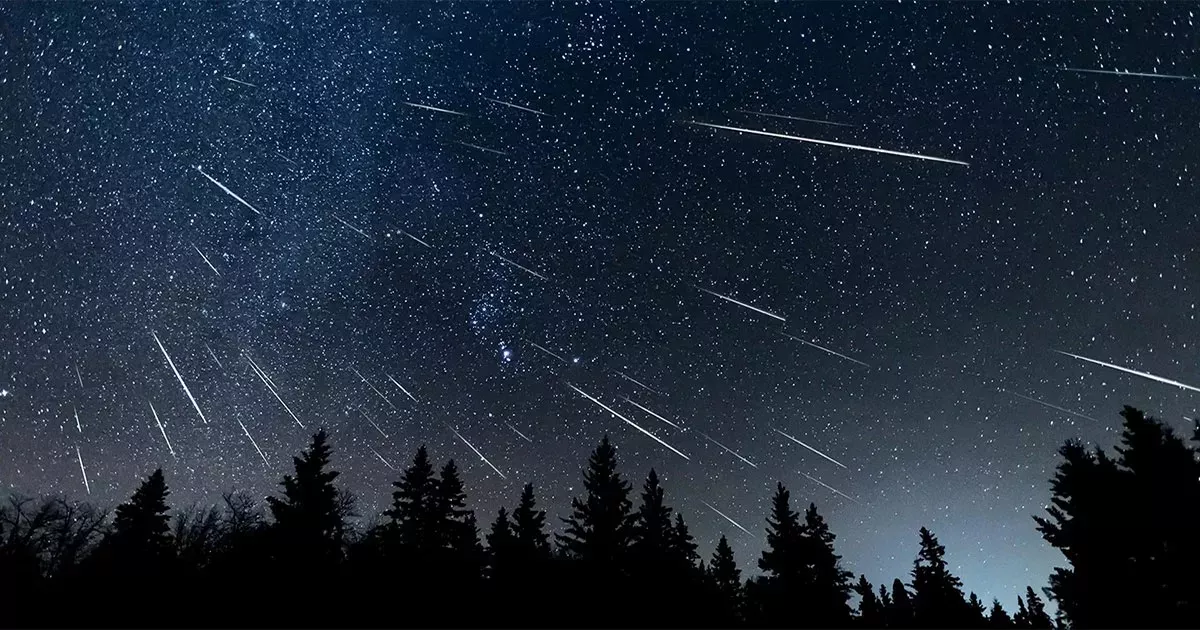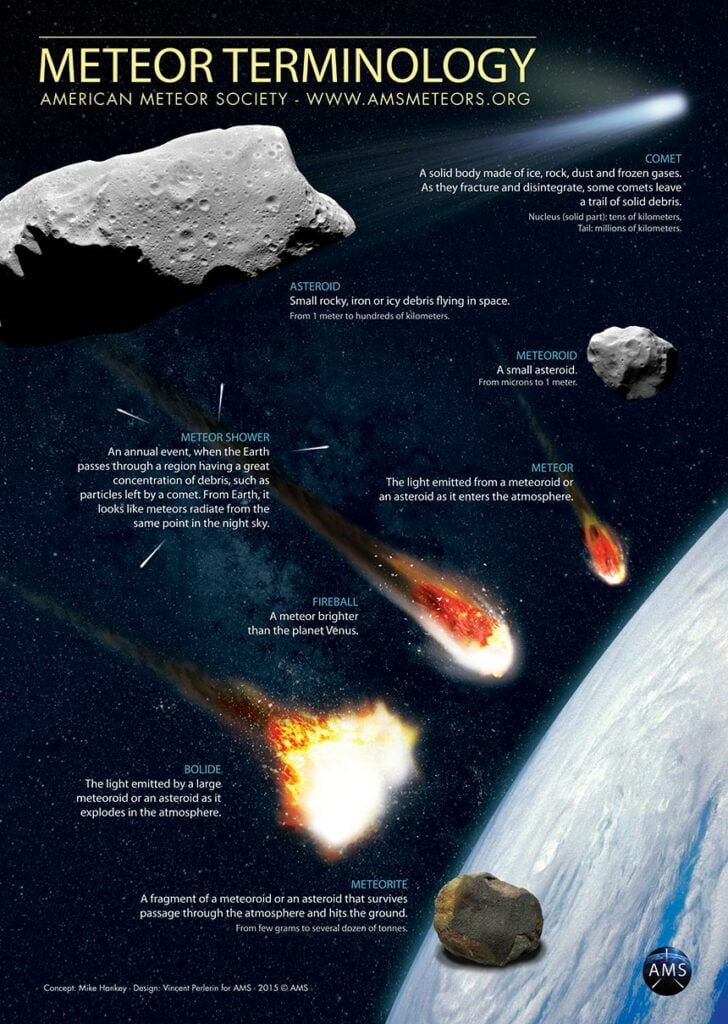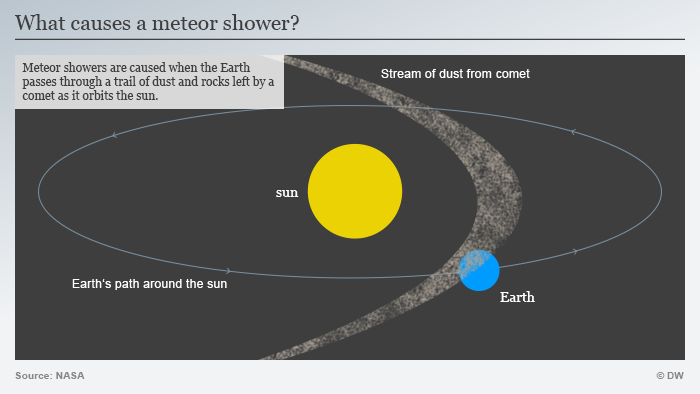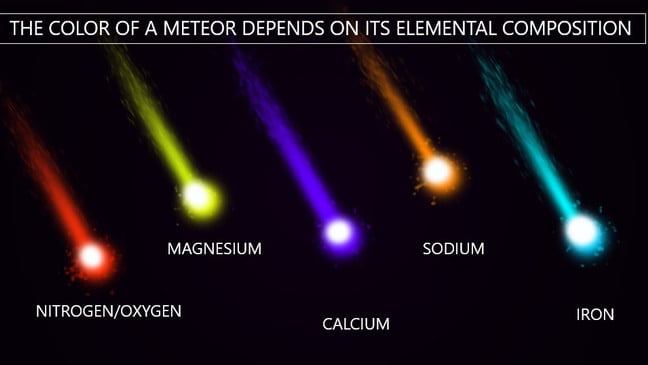

Nothing is more satisfying than watching shooting stars under a clear night sky. The thrill of spotting these ephemeral streaks of light, known as meteors, is unmatched. Meteor showers are happening nearly all the time, with an estimated 48 tons of meteoritic material falling to Earth every single day.
When you hear of an upcoming meteor shower, it usually refers to the "peak" period, which is the time when the shower is at its most active. This peak typically lasts for a couple of days, offering the best chance to see a higher number of meteors. However, the actual event stretches over several weeks, so you have multiple opportunities to catch a glimpse of these cosmic visitors.
When we think of a meteor shower, it’s easy to imagine meteors raining down constantly, filling the sky with light. In reality, most meteor showers produce a more modest display. During the peak, you might see a handful of meteors every hour, depending on the shower's intensity and your viewing conditions. This can still be an awe-inspiring experience, especially when you consider that each meteor you see is a tiny piece of space debris burning up as it enters our atmosphere at incredible speeds.
For the best viewing experience, it's recommended to find a dark spot away from city lights. Whether you’re a seasoned stargazer or a casual observer, there's something magical about lying back and watching the night sky, knowing that these meteors are ancient travelers from the depths of our solar system.

I have compiled a list of prominent meteor showers below. Many more are going on throughout the year, but these showers produce the brightest shooting stars. Or, in the case of the Geminids, the most. The Geminids shower is thought to be increasing in intensity every year. In the last few years, we have seen upwards of 160 meteors per hour in normal conditions.
Most showers get their names from a star or constellation close to where they appear in the sky.
For most meteor showers, you will need the sky to be as dark as possible. Finding a clear sky away from light pollution is best between midnight and a couple of hours before sunrise. If the shower’s peak also falls on a new moon, you will be in for a special treat. Because meteors are hitting the atmosphere constantly, but you can’t see most of them due to light pollution from city lights or the moon.

Asteroids and comets are constantly zooming around the sun, many following elliptical orbits. These elongated paths cause these celestial objects to occasionally cross Earth's orbit. As they approach the sun, they heat up and release gases and dust, leaving a trail of debris behind them. When Earth intersects these debris trails, we witness meteors streaking across the sky. Think of Earth as a giant vacuum cleaner, sweeping up the remnants of these asteroids and comets as it travels through space.
If you notice from the list of meteor showers, almost all of them occur at the same time every year. This regularity is because the debris trails left by comets and asteroids are not entirely cleared away by Earth's passage. Each year, as Earth travels through these trails, it encounters some of the remaining particles, creating the meteor showers we enjoy. Over time, these trails may become less intense as Earth gradually cleans up the debris in its path.
However, as the parent comet or asteroid makes another pass around the sun, it lays down a fresh layer of ice and rock, replenishing the debris trail. This can lead to an increase in the intensity of the next meteor shower, sometimes resulting in spectacular meteor storms. These storms can produce an impressive number of meteors, making for a truly breathtaking display.
Meteors come in all shapes and sizes. Most are only the size of a grain of sand and burn up quickly as they hit our atmosphere at high speeds, creating those fleeting streaks of light we call "shooting stars." These tiny meteors are responsible for the majority of the meteors you see during a shower.
However, some meteors are larger and can survive their fiery descent through the atmosphere. When these larger meteors hit the stratosphere, they often explode in a brilliant burst of light and energy, earning them the name "fireballs." Fireballs can be quite spectacular, sometimes bright enough to be seen during daylight hours.
Even more rarely, you might encounter a meteor that is large enough to make it all the way to the ground. When this happens, we call it a meteorite. Meteorites vary in size, from small pebbles to significant chunks of rock or metal. They are the remnants of ancient cosmic debris that have traveled through space for millions, sometimes billions, of years before finally coming to rest on Earth. These meteorites provide scientists with invaluable insights into the composition and history of our solar system.

An interesting aspect of meteors is the colors they produce as they burn up in the atmosphere. The color of a meteor is influenced by its elemental composition. Different elements emit different colors when they are vaporized at high temperatures:
These colors not only add to the beauty of the meteor display but also provide clues to the chemical makeup of the meteors themselves.
For the stargazers among us, knowing when and where to look for these celestial events is crucial. You can bookmark this page to stay updated on upcoming meteor showers. If you live in a populated area with lots of light pollution, use this list to plan ahead. Head out to the countryside where the skies are darker, find a cozy spot, and enjoy some star gazing. With a little preparation and patience, you can witness the mesmerizing spectacle of meteors dancing across the night sky, painting it with their vivid colors.
I wanted to single out the Leonids Meteor Shower. It is my favorite one of the year, and for good reason. Peaking on November 17th, the Leonids produce some of the brightest meteors I've ever seen. This shower is associated with the Tempel-Tuttle Comet, which makes an orbit around the sun every 33 years. Each time Tempel-Tuttle passes through our solar system, it leaves behind a fresh debris field. When Earth passes through this debris, we experience what is known as a meteor storm—a spectacular event where the intensity can reach up to 100,000 meteors per hour.
A meteor storm is what most people envision when they think of a meteor shower. The last notable meteor storm occurred in 2002, and I vividly remember the excitement it caused. Local news stations were flooded with calls from people who thought they were witnessing airplanes falling from the sky because of how bright the meteors were. I’ve seen them streak across the sky from horizon to horizon, leaving long-lasting impressions.
Although the Leonids often steal the show, the Geminids meteor shower, which occurs a few weeks later, also puts on a fantastic display. While Geminid meteors may not be as bright as those of the Leonids, they are more numerous, making for an equally enjoyable viewing experience.
Even if there's no meteor storm predicted for this year, the Leonids still promise an impressive celestial performance. It’s typically chilly out during the peak of the best meteor showers, so grab a warm blanket and some coffee, find a nice open patch of sky, and enjoy the show. With a bit of patience, you’ll be treated to some fantastic celestial fireworks that make braving the cold worthwhile.